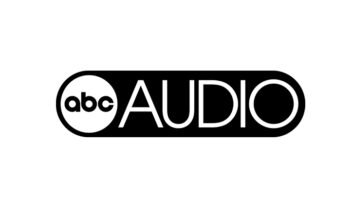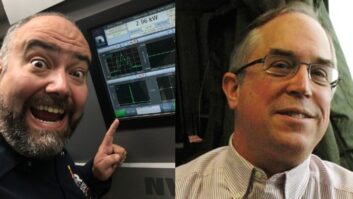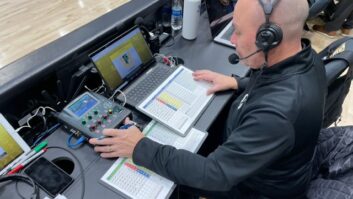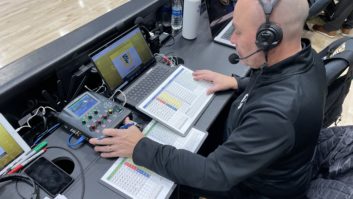Electronic newsgathering or ENG is a science unto itself, demanding special equipment and techniques. A remote engineer needs to be mobile. This entails a backpacker’s mentality and the physical strength to carry the equipment.
Wear soft-soled (silent on hard floors) shoes and loose fitting weather-appropriated clothing. Take a hat with a brim. Get those bifocals you have been avoiding. Put a bandana in your back pocket for cushioning the fishpole or mopping your sweaty brow. Last, carry small denomination bills to pay for taxis and water from street vendors – a $20 bill will cause you problems.
A basic recording kit should include the following gear: recorders, microphones, monitors, cables, power supplies and miscellaneous odds and ends on which I will elaborate.
The kit
Recorders are a good place to start. I recommend either one DAT recorder and one MiniDisc recorder; two MiniDisc recorders; or one cassette recorder.
For microphones, I recommend either an AudioTechnica AT835 shotgun microphone and an ElectroVoice RE50N/D omnidirectional microphone.
Equipment ListThis list contains my personal recommendations for the equipment that makes up a basic ENG kit, including approximate prices.
MiniDisc recorder: Sony MZ-B100 $310
DAT recorder: Sony TCD-D8 $700
Cassette recorders: Sony D-5 $650 D5 Pro 2 with XLR connectors $1,000 Marantz PMD 430 $480
Microphones and accessories: A-T 835A $275 Pop filter $20 EV RE50 N/D $189 Pop filter $20
Headphones: Sony MDR 7506 $165
Pistol Grips and Zepplins: Lightwave Systems pistol grip $250
Lightwave Systems zepplin $200
Miscellaneous: Fishpole $75 Battery Tester $20 Leatherman $35
For monitors I like to use a pair of Sony MDR 7506 headphones. I keep several cables in my kit: one female XLR-to-male 3.5mm mini-plug cable; one male XLR-to-3.5mm mini-plug cable; one 3.5mm stereo mini-to-mini cable; and a 25-foot female-to-male XLR cable. Be sure to use the Sony-type 3.5mm plugs; the Switchcraft 3.5mm plugs are too large and will break the jack in your device.
I bring these power sources: one A/C-to- D/C power supply each for DAT and MiniDisc, and 10 or more AA batteries. I also bring more media than I think I will need for each recording device.
A variety of miscellaneous gear is essential to the basic remote kit.
A fishpole, which is a telescoping tube that allows you to attach a microphone to one end, lets you get the mic closer to the sound source than would be possible if it were handheld. Carry along one 50 dB line level-to-mic level attenuator in case you have the good fortune to plug in to a multbox, a distribution panel provided at the event.
Also pack a 6-inch gooseneck, which is a bendable extension for the end of your fishpole; a Rowi clamp, a C-clamp that allows you to attach a microphone to a lectern or desk; and a pistol grip (for the AT835 shotgun mic), a shock absorber that reduces mechanical noise transmission to the microphone.
You will want to have a zeppelin for outdoor use, a device that houses your microphone and diffuses gusts of wind so that the mic does not pick up undesirable thumping and rumbling; two pop filters (one for each type of microphone); five feet of duct tape rolled onto a Sharpie magic marker; one Leatherman-type multi-tool; and a battery tester.
When one considers the expense of travel and time, batteries are no place to economize. Do not risk the loss of your recorder for the price of two AAs. Buy a battery tester. Change batteries every gig and carry spares. If you will be in a cold environment place several extra sets of batteries in your pockets close to your body. If possible, keep the recorder in your pocket.
MiniDisc and DAT recording
Pay special attention to the audio level meter on your recorders. If you are using MiniDisc you want the loudest moment of your event to go all the way up to -4vu (volume units) on your recorder’s volume meter. The majority of your level will be around -12vu.
MiniDisc should not be your first choice in recording a live musical performance or historical event. DAT or analog open reel would be a higher-fidelity choice.
Digital audio tape recorders are actually tiny videocassette recorders. Because they do not use any data compression, DAT recorders are a good choice for complex foreground recording – musical performances, for example.
If you are using DAT, again you want the loudest moment of your event to go all the way up to -4vu on your recorder’s level meter. The majority of your level will be around -12vu.
Exercise the tape
Always exercise a new DAT tape before recording on it. Simply put it in the machine, press fast forward to the end, and then rewind it. Be aware that unlike an analog cassette tape, you cannot turn a DAT tape over and continue recording on the other side.
It is important to relieve the stress on your recorder’s tiny jacks by plugging the cable in and then taping the cable with duct tape to the body of the recorder, leaving a small loop that allows the cable to maintain a straight relationship to the plug and jack. Getting into the habit of doing this will minimize connector failure in the field.
Cassette recording
You might consider using a cassette recorder if you are traveling to an area of the world that does not have ready access to MiniDiscs or DAT tapes. Cassettes are available everywhere – even if you have to resort to buying a prerecorded one and recording over it.
The basics of cassette maintenance are to clean the tape path, demagnetize the heads and calibrate the recorder.
Choose one brand of tape you will use exclusively when you record. TDK SA90 is a good choice. Take a cassette and the machine to a local hi-fi shop and have them calibrate the recorder for that specific brand and model of tape. Then have them align your Dolby noise reduction unit. Playback of different brands of tape does not need recalibration for each type – it is the recording electronics that need it.
Have your cassette deck recalibrated every three months, and at any time you change brands of tape. Since TDK SA90 is a high-bias chromium dioxide tape, be sure your recorder is always set to Type II.
If you record cassettes using Dolby or DBX noise reduction systems, use the noise reduction for both recording and playback. Also, plan on using your machine to play the tapes back, as those tapes can only accurately be reproduced by the device on which they were recorded.
Mic choices
The reason so many microphone manufacturers can comfortably coexist is because of the special character each type of microphone possesses.
Reporters primarily use two types of microphones – shotgun and omni.
The Audio Technica AT835 is an electret shotgun condenser microphone powered by AA battery. The AT835 picks up only what is directly in front of it, making it an excellent choice when interviewing an individual in a crowd or noisy environment.
This microphone is extremely sensitive to handling and wind noise, however, so a pistol grip shockmount and zepplin are essential.
The ElectroVoice RE 50ND mic is good example of the latter, an omnidirectional dynamic.
As an omni mic, the E-V would be a good choice for recording an interview in a quiet space as well as gathering ambience. It is relatively insensitive to handling noise and wind.
If I had to choose only one microphone it would be the A-T 835 shotgun. It produces most intelligible recordings of conversation. As these tools fulfill differing needs, if it is at all possible an ENG kit should include both shotgun and omni microphones, as well as their accessories.
Post-recording
Good post-recording habits are important. You should label every piece of recorded media. For cassettes, pop out the safety tabs after recording the tapes cannot be accidentally erased. Engage the lock on the back of DATs and MiniDiscs (it is located on the spine).
Never throw away a master. Make safety copies of precious stuff. Keep all tapes and recorders away from metal and magnets – including speakers, amplifiers, electrical equipment and power cords. Keep your media out of the heat, humidity and direct sun. Protect recorded media in a clean, dry, dust-free place.












